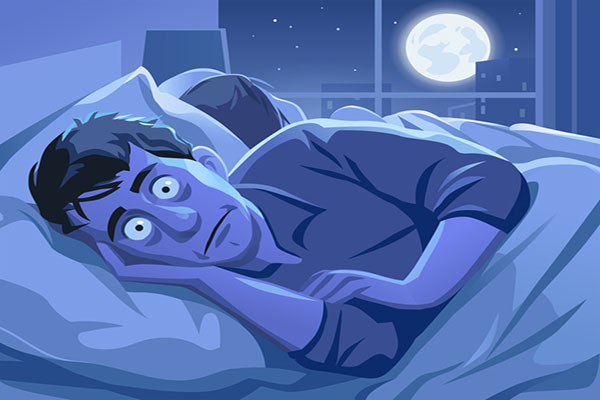
HICprevent
This award-winning blog supplements the articles in Hospital Infection Control & Prevention.
Sleep Woes a Work Problem, but HCWs Must Be Proactive
December 8th, 2023

By Gary Evans, Medical Writer
Sleep disturbance is an all too common problem for healthcare workers, particularly if caused by alternating work shifts from day to night. While the workplace system is still the primary driver of insomnia, there are things the individual can do to lessen the impact, which can be considerable. But has the pendulum swung too far?
“If you go back 15 to 20 years ago, it was all about the individual,” says Dave Lu, MD, MSCI, MBE, an emergency department physician at the University of Washington School of Medicine.
Sleep disturbance can lead to burnout and a panoply of other adverse effects, but in the past healthcare workers were advised to do mindfulness training, meditation, and become more resilient.
“There was appropriate pushback from providers because that was not the root of the problem,” Lu says. “Since then, it has become all about the work system and removing obstacles that cause burnout. But it shouldn’t be exclusively a workplace or system-based [issue] — there is still a role for the individual to do something.”
Lu recently published a commentary that argues the role of individual actions dropped out of sleep discussions as the paradigm shifted from self to system as the primary cause of insomnia.
“I am not saying the individual has the bulk of the burden,” Lu tells Hospital Employee Health. “Far from it. It is still a systems problem and that needs to be the target. But maybe a small percentage should be based on the individual, so you are not just waiting for your workplace to make you feel less burnout.”
In the commentary, Lu notes that “even theoretically perfect workplaces with ideal conditions for sleep health may not ultimately improve healthcare workers’ sleep behavior or results.”
“It still depends on the person,” he explains. “There are individual components that still contribute to burnout. It’s a small percentage, but it is not nothing.”
Lu’s commentary accompanied a study that linked sleep problems to burnout, including symptoms like emotional exhaustion. The analysis included 126 emergency department workers, finding that poor sleep quality and insomnia symptoms correlated with established measures of burnout.
“The sleep-burnout relationship is likely bidirectional,” the authors hypothesized. “Healthcare workers poor sleep may also be associated with factors unrelated to occupational demands (e.g., personal stressors and family obligations).”
With regard to shift work, there is little way around it for specialties like emergency medicine.
“Unfortunately, it is kind of the nature of the beast,” Lu says. “There are some creative things you can do here and there to lessen the impact, but shiftwork is very disruptive to your circadian rhythms as you flip from days to nights. One day I’ll be starting at 6 p.m., the next day I’ll be working from 2 p.m. to 10 p.m., then the next day I will be working from 10 p.m. to 6 a.m. But the individual still plays a role. If you have young children, long commutes, an [existing] sleep disorder, that is all on the individual. There is very little your employer can do to give you a perfect schedule. It illustrates the intersection between the workplace and individual actions.”
According to American College of Emergency Physicians, biological and social problems associated with rotating shifts include higher risk for peptic ulcers, heart attack, divorce, substance abuse, accidents, and depression. “The adverse effect of constantly rotating shifts is the single most important reason given for premature attrition from the specialty,” ACEP reports in a wellness guidebook.
For these reasons, ACEP recommends, ”Be selfish with your sleep. Let family and friends know that you are out of commission until a certain time and request that they avoid texting or calling during your sleep times. Put a sign on the door that says, ‘Day Sleeper. Do Not Disturb and Do Not Open the Door.’”
Other ACEP recommendations for healthcare workers struggling with sleep include:
- Create a dark and cool sleep room at home. If soundproofing is not possible, consider earplugs and eye shades.
- A split-sleep period used by some healthcare workers calls for sleep for 3-4 hours immediately before and 3-4 hours immediately after a night shift. The rationale is that at least part of each sleep episode is during the circadian period when sleep is expected.
- A healthy diet and exercise is recommended, but exercising within 2 hours of intended sleep time may delay the onset of sleep.
- Stop consumption of caffeine four hours before going home to decrease time to restful sleep. Melatonin promotes REM sleep and has been shown to hasten resetting of circadian rhythms.
For more on this story, see the next issue of Hospital Employee Health.
Gary Evans, BA, MA, has written numerous articles on infectious disease threats to both patients and healthcare workers for more than three decades. He has been honored for excellence in analytical reporting five times by the National Press Club in Washington, DC.
